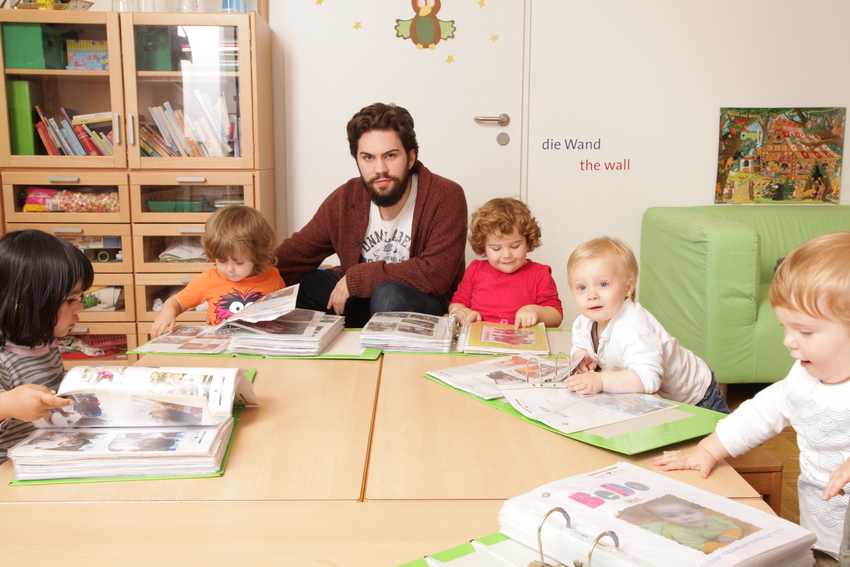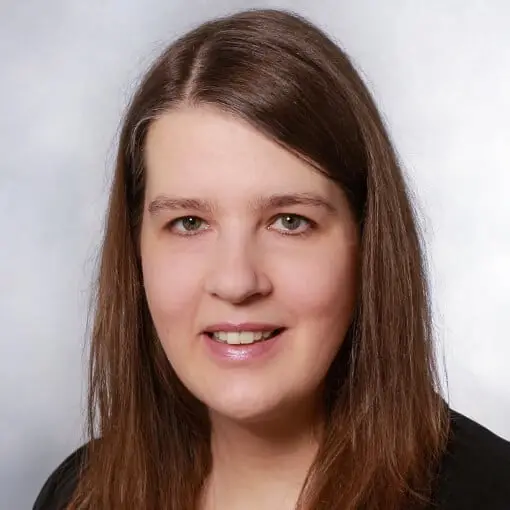
Educational and learning stories: "It must irritate me"
A double interview: How do we observe and document correctly in everyday life at childcare center?
The orientation plans of the 16 federal states recommend observing and documenting children's educational processes. Why is observation and documentation so important?
Dr. Damen: Observing children's everyday situations is the basic tool for educators. Only by seeing and learning to observe situations can I understand what children do and reflect on it in relation to my pedagogical actions. I observe what is happening in the "here and now" and plan my activities for the children accordingly.
Stephanie Niemierza: With the help of observation, we can discover the child's potential and initiate educational processes. One example: If we see that the children are doing shaking experiments with water and sand, we then put different cups and bowls out for them to experiment with on their own. And we use this observation to create a new activity.
Development and education: "There are two sets of observation glasses that an educator has to put on."
How do I observe a child correctly? Is there a specific method?
Dr. Damen: There are two sets of observation glasses that an educator should consciously put on. The first is the development glasses. Here I observe how the child develops in areas of competence: Is it developing in an age-appropriate way? For example, can they pronounce enough words for their age? I am very focused in my perception and look and listen to what I want to know about the child's development. This is necessary because only then can I recognize, for example, in which situations the child speaks and in which situations it avoids speaking.
The second lens is the educational lens: this is about recognizing the child's issues and strengths. I can only support the child's development if I know their strengths, interests and preferences. However, I have to approach these observations much more freely. This means that I am present in situations and take note: is what I see typical for the child or do I see something new? I have to allow myself to be irritated, remain curious and keep asking: "What are the children doing right now?" Only this way of looking enables me to recognize children's educational processes and situations and to reflect on their significance.
"The documentation should say something about the child's strengths."
But don't developmental glasses carry the risk of quickly pigeonholing children?
S. Niemierza: Both instruments are integral parts of pedagogy. I need to have a certain framework for what normal development looks like for 90 percent of children in this age group. In our facilities, we work with the developmental milestones. However, the documentation - i.e. what I give the children and parents - should say something about the child's strengths and not about their deficits. These can soon be overcome. In the morning at 9 a.m., the child can't yet do a reset step, but by 3 p.m. it can. If we were to document the deficits, there would be a danger of creating pigeonholes and pigeonholing children.
The observation seems to be very focused on the individual. How do you intend to create a suitable offer for a whole group of children on this basis?
Dr. Damen: Reflecting on children's individual educational processes and situations leads to processing and thus to the planning of educational work. As a rule, the children are also active in groups. If I observe that several children are busy with micro-organisms in the outdoor area, I can consider who can accompany this process or which materials can support this interest. Another way would be to gather the children's interests and topics via children's conferences and decide together what to tackle next.
"Many observation methods are self-made and not scientifically proven."
Are there different concepts or approaches to how children should be observed? Or is it the same for all educators?
Dr. Damen: As part of the research project "BeDo-NRW - Observation and Documentation in Child Day Care Facilities" , we spent two years in North Rhine-Westphalia surveying the status of observation and documentation work and collecting data on which observation methods are used. We researched more than 44 observation tools and were able to identify further methods in the survey of around 10,000 childcare centers in NRW. Many of these are home-made and not scientifically proven. Educational professionals therefore have a large number of observation and documentation procedures at their disposal. This does not create opportunities, but causes uncertainty. Another problem is that the majority of observation procedures focus on child development, while few observation procedures focus on children's educational processes.
S.Niemierza: That's also what often stresses out educators: Not knowing which method to use with the variety of observation tools. But if I know which tool I can use and for what, then I don't see the learning stories as an additional task in everyday life, but prioritize differently and lose less time.
So you see major deficits in knowledge about the observation process, especially when it comes to children's educational processes?
Dr. Damen: Yes, it's not enough just to observe the child's development. Through the lens of development, I can see that a child speaks very little, for example. But it doesn't help the child if I keep asking them to speak based on this knowledge. Instead, I have to put on my educational glasses and think: What is the child interested in? What are their preferences? If I see that the child loves toy animals, for example, then I can try to build a close and familiar relationship by playing with the animals and thus give the child a sense of security. In other words, I can use his preferences to create language opportunities.

"Learning stories should be a dialogical element," says Prof. Dr. Damen. The children should be able to take them themselves at any time and look at them together with other children or their parents (Photo: childcare center of pme Familienservice).
"Every child has a so-called 'me book' in the group."
In other words, the aim of observation and documentation is to give the children strength and security?
S. Niemierza: That's right. This happens mainly by documenting these interests, for example by taking photos of how the child builds a huge landscape with toy animals and writing a learning story about it. I can read this story to the child later and use it to show them: I see you, I find what you do totally exciting and you are a specialist in this field. We choose the photos together with the children so that they can get involved and show: "I am this child and I have gained this experience."
So learning stories are not created in a quiet room, but together with the children?
Dr. Damen: Exactly. Learning stories should be a living object that the children can see, touch and look at at any time and with which they can interact with their teachers. And the other way round too, of course: the teachers with the children. It is a very dialogical element in the documentation work.
S. Niemierza: Every child in our group has a so-called "me book" that they can take out of the cupboard themselves to look at again and again or to show other children and their parents.
You haven't seen the children for 10 weeks or more because childcare centers was closed due to the coronavirus outbreak. How do you know how they have developed over the last few weeks and what they have learned?
S. Niemierza: We sent parents a new Bedo sheet fairly soon after the coronavirus outbreak so that they could write down together with the children what new rituals they had learned, for example. The children can bring the sheet with them on the first childcare center day and we try to use it to create so-called transitions. We find out everything the children have done and learned in the last few weeks and pick up where we had to leave off.
 Prof. Dr. Sonja Damen is a qualified curative educator and heads the B.A. course in "Childhood Education" at the Fliedner University of Applied Sciences in Düsseldorf and has been supporting and advising the pme Familienservice for more than ten years.
Prof. Dr. Sonja Damen is a qualified curative educator and heads the B.A. course in "Childhood Education" at the Fliedner University of Applied Sciences in Düsseldorf and has been supporting and advising the pme Familienservice for more than ten years.
 Stephanie Niemierza is the facility manager of the Düsseldorf childcare center Locomotion Kids of the pme Familienservice and also works in the central childcare center coordination of the pme learning worlds.
Stephanie Niemierza is the facility manager of the Düsseldorf childcare center Locomotion Kids of the pme Familienservice and also works in the central childcare center coordination of the pme learning worlds.
About the pme learning worlds
As a provider of over 75 childcare and educational facilities, we offer parents and their children high-quality and flexible education. Our colorful teams are made up of people from different nations, with diverse talents and interests.
You can find out more about our educational concept and current vacancies here: www.familienservice.de/web/pme-lernwelten
You may also be interested in these articles:
Germany's first online childcare: innovation that inspires!
#stayincontact: 9 tips on how our educators stay in touch with the children
DIY: 5 simple and cool craft ideas for children from childcare center everyday life
We are the Bulligarten: Introducing our childcare center in Hanover!




